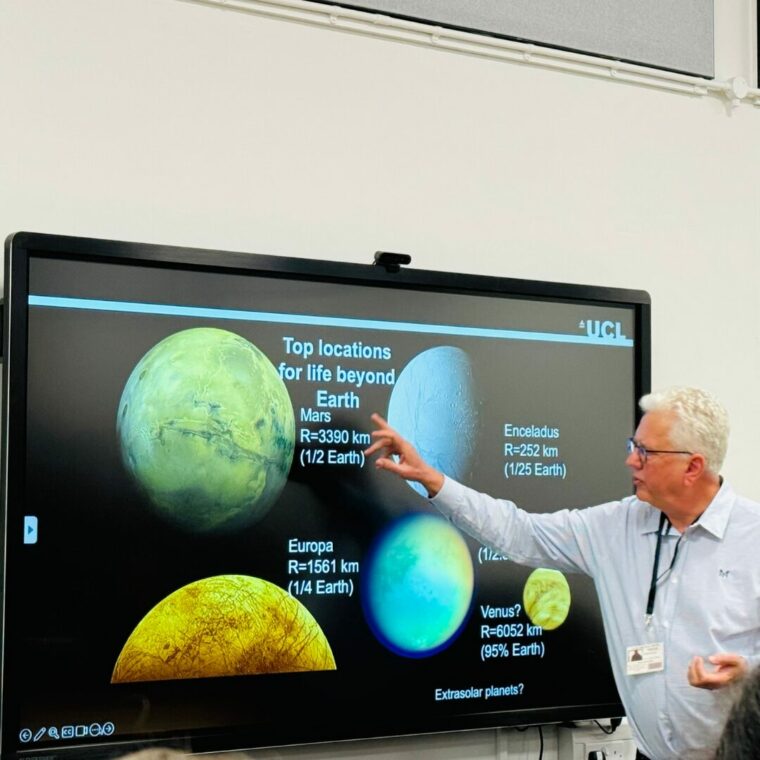News & Events
Astrogazers: The Weather in Space and Looking for Life on Mars
February 2, 2024

Professor Andrew Coates came to give a very exciting lecture about what affects the weather in space and also gave us an insight into his ongoing research about the possibility of there being life on Mars in the past!
We first discussed neutral particles in the atmosphere as well as the different layers that the atmosphere is composed of. From lowest to highest, the major layers are the troposphere, stratosphere, mesosphere, thermosphere and exosphere.
Then we talked about the effects of solar winds on phenomena such as the Northern and Southern lights. Both the Northern and Southern lights are caused by the interaction of gases in Earth’s atmosphere and with the solar winds. Solar winds are a stream of electrically charged particles, called ions, that shoot out from the Sun in all directions.
Next, we dove into “The Realm of Plasma”… And not the kind you study in Biology! The universe is made up of something known as space plasma, which is the fourth state of matter after solids, liquids and gases. Space plasma generates its own electric current and can even conduct electricity better than metals!
We discovered that there are Auroras on other planets with a magnetic field (not just Earth) and even saw some computer generated images of what the Auroras on Jupiter and Saturn would look like.
Afterwards we learned about the importance of the magnetosphere and how it helps the Earth develop into a planet that could support life by preventing harmful solar radiation and cosmic radiation from reaching the Earth.
Then we went on to explore the very exciting topic of the top locations for life beyond Earth! There have been signs of water on the surface of Mars about 3.8 billion years ago and it has an existing kind of magnetic field, acting as evidence that it once had a dipolar magnetic field like the Earth. It is also home to the largest volcano in the entire solar system!
The basic requirements for life are liquid water, essential elements (Carbon, Hydrogen, Nitrogen, Oxygen, Phosphorus and Sulphur), a source of heat, as well as sufficient time for life to develop. All of these factors are thought to have been present on Mars about 4 billion years ago so it is very possible that there was once life on Mars, just a long long time ago!
Finally, to end what had been a very informative presentation and discussion, we had the opportunity to have a question and answer session with Professor Coates, who gave us some valuable answers to our many many questions!
All of us at Astrogazers just wanted to say a huge thank you for coming in and teaching us all about your research! It was really interesting to find out more about the weather in space and exciting to think about the prospect of potentially meeting some aliens in the future… or maybe that’s a little bit of a stretch! Who knows?
Anaiya S
Astrogazers Crew Operations & Resources Engineer
More news
Sixth Form
Lower Sixth GDST Lead Programme 2024
Junior School
Year 5 Wearable Tech Challenge 2024
Junior School



